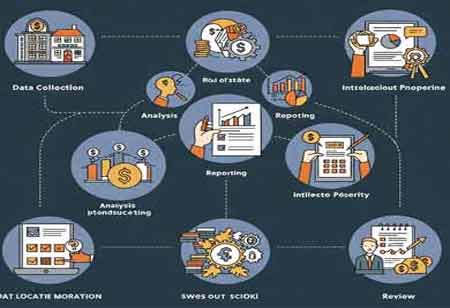CLOSE
Specials
- CPA Firms Canada
- Treasury Management Europe
- Financial Risk Management APAC
- Investment Banking APAC
- Corporate Advisory APAC
- Regtech APAC
- Escrow Services
- Digital Banking Latam
- Trading Solutions APAC
- Financial Asset Management APAC
- RegTech Europe
- Financial Risk Management Europe
- Mortgage Broker
- Financial Licensing Europe
- RIA Advisory Europe
- FinTech Canada
- Investment Banking Canada
- Wealth Management MENA
- Investment Advisory APAC
- Investment Advisory Europe
- Financial Brokerage Firm APAC
- FinTech
- Wealth Management
- Proprietary Trading Europe
- Payment Solution
- Lending mangment
- Financial Health Europe
- Investment Management Latam
- Financial Fraud
- Alternative Investments Canada
- Broker Dealer Firms Canada
- Payment Solution Europe
- Broker Dealer Firms
- Financial Compliance
- Investment Management
- Financial Planning
- FinTech Europe
- Mergers and Acquisitions Consulting
- Debt Collection Agencies
- Claim Adjusting
- Wealth Management APAC
- Valuation Services Canada
- Investment Services
- Mergers and Acquisitions Consulting Canada
- CPA Firms
- Equipment Financing
- Mergers and Acquisitions Consulting APAC
- Claim Adjusting APAC
- Digital Banking Europe
- CFO Services
- Debt Collection Agencies Europe
- Wealth Management Europe
- Mergers and Acquisitions Consulting Europe
- Financial Restructuring Europe
- Financial Portfolio Management Canada
- Business Loan
- Payment and Card Latam
- Wealth Management Latam
- Mergers and Acquisitions Consulting Latam
- Tax Advisory Canada
- Trading Solutions Europe
- Alternative Investments
- Digital Insurance Europe
- Financial Marketing
Weekly Brief
×Be first to read the latest tech news, Industry Leader's Insights, and CIO interviews of medium and large enterprises exclusively from Financial Services Review
Thank you for Subscribing to Financial Services Review Weekly Brief
Mastering Open Banking API Integration with Effective Strategies and Solutions
Open banking API integration drives innovation, enhances customer experience, improves operational efficiency

By
Financial Services Review | Friday, January 17, 2025
Stay ahead of the industry with exclusive feature stories on the top companies, expert insights and the latest news delivered straight to your inbox. Subscribe today.
Open banking API integration drives innovation, enhances customer experience, improves operational efficiency, and fosters collaboration between banks, FinTech, and third-party providers, reshaping financial services.
FREMONT CA: Open Banking API integration is reshaping the financial services industry by providing seamless connectivity between banks, third-party developers, and customers. This technology allows for secure data sharing, enabling the creation of innovative financial products and services. As more financial institutions adopt open banking, practical strategies and solutions become critical to harness its full potential. Successful API integration can drive customer engagement, improve operational efficiency, and foster a competitive edge in the rapidly evolving financial landscape. With the right approach, open banking can transform how economic data is accessed and utilized, ultimately shaping the future of banking.
Open banking API integration involves connecting and synchronizing various financial systems, including banks, non-bank financial institutions, and third-party service providers, through standardized Application Programming Interfaces (APIs). These APIs enable the secure exchange of financial data and services, allowing customers to share their information with authorized third parties and access a broader range of financial products and services. The process typically begins with the customer providing explicit consent for a third-party provider to access their bank data, which is crucial for privacy and security. Following consent, the third-party provider submits an API request to the customer’s bank, specifying the necessary data or services. The bank then authenticates the third-party provider and verifies the customer’s consent, ensuring only legitimate requests are processed. Upon successful authentication, the requested data is shared with the third-party provider via the API, enabling the delivery of innovative financial services, such as budgeting apps, payment services, and personalized financial advice.
With the implementation of the Payment Services Directive (PSD2), banks are now required to share consumer data through an API, which licensed third parties can access. All central Australian banks have complied with open banking regulations. Companies must obtain an AISP (Account Information Service Provider) or PISP (Payment Initiation Service Provider) license to access customer financial data. Once authorized, they can securely use open banking APIs to access the data. Consumers grant consent for third-party access, enabling more personalized services, while payments are processed directly from the bank to the third-party app, streamlining transactions without intermediaries.
Open banking offers several benefits for banks and financial institutions. It facilitates collaboration with fintech companies, helping banks stay relevant in the evolving economic landscape while gaining access to modern technology trends and innovative infrastructures. Open banking also enhances financial services offerings. Regarding anti-money laundering (AML) investigations, it provides access to real-time financial data, enabling faster analysis and better detection of suspicious transactions by directly comparing customer-provided information with real-time data. Additionally, it improves customer experience by offering seamless data access, enabling personalized financial recommendations, and simplifying the e-KYC process, with a 90-day access window for customer verification.
Understanding Regulatory Requirements
Maintaining Strong Security: Stringent security measures, such as encryption, authentication, and authorization, must be implemented to safeguard data from unauthorized access or tampering. These steps ensure that sensitive customer information is protected throughout the integration process.
Adopting a User-Centric Design: The integration should prioritize the user experience by designing intuitive interfaces. This allows users to grant permissions and navigate through the process quickly. Providing clear, accessible information about what data is being shared and how it will be used builds trust and encourages greater user engagement.
Focusing on Scalability: As open banking continues to evolve, it is essential to ensure that the integration is scalable to accommodate future changes. Choosing an architecture that allows for easy updates and integrating additional APIs helps to future-proof the system. Modular designs offer flexibility, allowing the integration to adapt to new regulations, technologies, or user demands without requiring significant overhauls.
Establishing Strong Partnerships with API Providers: When selecting API providers, it is crucial to evaluate them based on their security standards, the quality of their API documentation, their support services, and their reputation in the market. Building strong, reliable partnerships with providers ensures the success and sustainability of the open banking integration.
As the financial landscape continues to evolve, embracing open banking and adhering to regulatory requirements will be essential for institutions aiming to stay ahead in a rapidly changing market. With the right strategies and solutions, open banking can unlock significant potential for growth, efficiency, and improved services in the financial industry.

Copyright © 2025 Financial Services Review. All rights reserved





